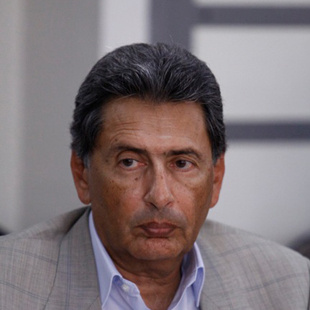Turkey lags behind three neighbors

IRD: The Iran-Syria-Iraq pipeline will be under construction soon, but based on Iran’s problems with pipelines with some other countries, do you think Iran has the technical capability to launch this pipeline?
NG: There is no specific problem in terms of technicalities, and Iran’s responsibility is only up to where the line reaches Iraq. After that the responsibility is on the shoulders of a consortium that has to take the gas from its source to the destination, which is Europe. Part of the route is in Syria and Iraq, which is not a problem because they have on the ground facilities and Iranian, Syrian and Iraqi experts can build that section. But part of it--which is located under the sea and has to go to Greece-- is the first challenge in this project. Building gas pipelines under the sea has been done before by some companies and if they cooperate with this consortium there will be no problem. Therefore this pipeline is manageable in terms of technicalities.
IRD: How vast are Iran’s gas reserves to enable us to export both to Turkey and Europe?
Iran’s total reserves are more than 30 trillion cubic meters, ranking us second in the world. Countries like Canada and Norway, which have much less in reserves, export more than Iran. If Iran is able to expand its resources, it will benefit us in our domestic use, gas based industries, inserting gas to oil fields, and finally exporting it. Therefore to answer your question I have to say that this ability depends on our ability to develop our reserves; not on the amount of reserves we have.
IRD: What do you mean by developing these reserves?
If we are able to develop these reserves on time and efficiently, then we will be able keep up with the project. In other words we can use this development for both domestic use and exports.
IRD: Because of the sanctions Iran is faced with problems in its transactions; such as its problem with India. Will the sanctions create any problems for this pipeline, which is to reach Europe?
First of all I have to remind you that a huge project like this will take about eight years to accomplish. Therefore we cannot guess what will happen then, or whether we are still under sanctions by that time. These problems might be solved by then. However, there are some mechanisms to prevent such problems. For example the consortium which purchases the gas from Iran and Iraq will export it itself. Therefore, there might not be any official agreement between Iran and European countries, and the consortium will be responsible for the transactions. Of course this is the case if the sanctions are still being applied.
IRD: How can you compare exports by this new pipeline with what we already have?
Our exports to Turkey are about 22 million cubic meters daily. But the new pipeline is estimated to export about 110 million cubic meters per day, which is 5 times more than our exports to Turkey. But all this gas will not go to Europe, and it will be used in Iraq, Syria and other countries as well. Twice the amount we export to Turkey will be exported to Europe. Nevertheless, the export of this amount of gas in 25 years is still less than a thirtieth of Iran’s current reserves.
IRD: How optimistic are you about this plan as an expert, and how do you see its challenges and opportunities?
Generally I’m optimistic about this project. But how far my optimism will be rewarded is a different story. It should be said that there are many challenges ahead, but they will not prevent us from going forward with this project.
The biggest challenge is increasing the amount of production, which should reach a level to meet our domestic demand plus inserting gas to the already existing pipelines and providing gas for this new pipeline. Technical challenges in building the line under the sea in addition to the challenges of long-term agreements of transit and the consortium are among the main challenges as well. Another challenge is providing security for the pipeline throughout its route.
The importance of this line is that it directly connects the Far East to Europe. Turkey is willing to buy gas from Iran and sell it to Europe, or in other words it wants to turn into the region’s gas hub. But if we are able to accomplish this project, then gas will directly reach Europe.

